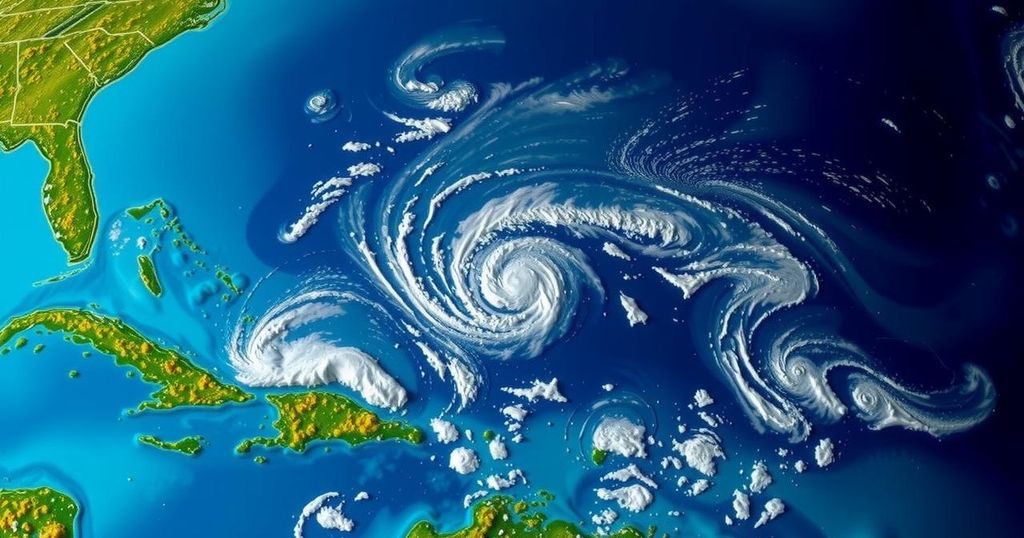The Atlantic hurricane season remains active in November, with three areas under watch, particularly in the western Caribbean, potentially developing into a tropical depression soon. Heavy rainfall is expected in several regions, while conditions in the Gulf of Mexico may protect against further storms. The season has already been unusually active, with the potential for continued storm formation despite the typical slowdown in November.
As November arrives, the hurricane season is still alive with potential threats in the Atlantic, challenging typical seasonal patterns. Currently, three areas of concern are being monitored closely, particularly one situated in the western Caribbean, which holds a significant chance of developing into a tropical depression by the weekend or early next week, according to the National Hurricane Center. If it forms, this system may evolve into Tropical Storm Patty, followed by Rafael and Sara as the season progresses. Forecasts indicate that once developed, this system could potentially set its sights on the Gulf of Mexico, bringing with it considerable rainfall and gusty winds across the western Caribbean, Central America, and Mexico’s Yucatán Peninsula in the upcoming week. For the U.S. Gulf Coast, there may be some respite from tropical threats due to upper-level winds, which are expected to inhibit any storm activity in the region, potentially dismantling systems before they make landfall. The two other areas under observation show low probabilities for tropical development. Storms causing heavy rainfall recently in Puerto Rico and the northeastern Caribbean may present a minimal chance of organizing into a tropical system as they move westward, leading to further flooding concerns. Traditionally, the hurricane season begins to taper off in November; however, this year has proved exceptional, with higher-than-average occurrences of named storms. Five hurricanes have already impacted the U.S., despite a notable reduction in storm activity during peak months. Recent data suggests that while November storms do occur, they are rare and typically develop in regions where warm waters persist and atmospheric conditions are favorable.
Hurricane season, spanning from June 1 to November 30, typically sees a reduction in storm formation as it approaches November. However, data suggests that this year has been atypical, seeing an increase in activity with several hurricanes already impacting the U.S. Historically, storm formation in November occurs less frequently, and most named storms form earlier in the season. According to NOAA, the likelihood of storms making landfall in the U.S. in November is minimal, with warm waters and weaker winds providing environments conducive to development primarily in the Caribbean and central Atlantic regions.
In conclusion, as the hurricane season nears its official end, the Atlantic Basin still harbors potential for tropical storm development, particularly in the western Caribbean. While conditions appear to favor atmospheric disruptions over the Gulf of Mexico, which may mitigate storm threats in that region, significant rainfall is anticipated in other areas. This year’s season continues to deviate from historical patterns, raising concerns and preparations for any storms that may arise despite the calendar suggesting a slowdown.
Original Source: www.cnn.com






